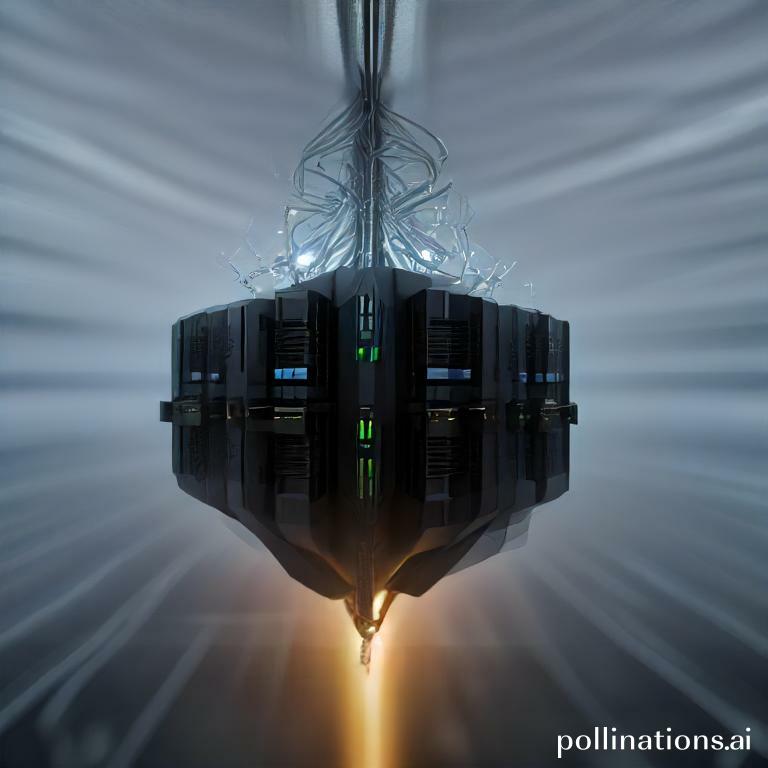
Check Out The Exclusive Deals Waiting For You! ∇
Security Concerns with Smart Thermostats
In today’s technology-driven world, smart thermostats have become increasingly popular for their convenience and energy-saving capabilities. Albeit, it is crucial to understand the potential security risks associated with these devices to ensure the safety of your home and personal information.
1. Vulnerabilities in Smart Thermostats
Smart thermostats are connected to the internet, making them susceptible to cyber attacks. Hackers can exploit vulnerabilities in the device’s software or network connections to gain unauthorized access to your thermostat and potentially your entire home network.
One of the main concerns is that hackers may be able to control your thermostat remotely, adjusting the temperature to uncomfortable levels or even turning it off completely. This can not only disrupt your comfort but also lead to potential issues such as frozen pipes in colder climates.
Additionally, hackers can use smart thermostats as a gateway to access other connected devices in your home. Once inside your network, they can gain control over other smart devices, compromising your privacy and security.
2. Protecting Your Smart Thermostat
To ensure the security of your smart thermostat, there are several measures you can take:
– Keep your thermostat’s software up to date: Manufacturers regularly release updates to address security vulnerabilities. Make sure to install these updates promptly to stay protected.
– Use a strong, unique password: Create a strong password for your thermostat’s account and avoid using the same password for multiple accounts. This will make it harder for hackers to gain unauthorized access.
– Secure your home network: Set up a strong and unique password for your Wi-Fi network and enable encryption (WPA2) to protect your smart thermostat and other connected devices.
– Disable unnecessary features: Some smart thermostats come with additional features that may pose security risks. Disable any features that you don’t need or use to minimize potential vulnerabilities.
Key Security Features to Look for in Smart Thermostats
Relating to smart thermostats, ensuring the security of your data and protecting your privacy should be a top priority. Here are some key security features to look for when choosing a smart thermostat:
1. Encryption and Data Protection
One of the most important security features in a smart thermostat is encryption and data protection. This ensures that your personal and sensitive information, such as temperature settings and usage patterns, are securely transmitted and stored. Look for a smart thermostat that uses strong encryption protocols, such as AES-256, to safeguard your data.
2. Two-Factor Authentication
Enhanced security can be achieved through the use of two-factor authentication. This adds an extra layer of protection by requiring a second form of verification, such as a unique code sent to your mobile device, in addition to your password. With two-factor authentication, even if someone manages to obtain your password, they would still need the second factor to gain access to your smart thermostat.
| Key Security Features |
|---|
| Encryption and Data Protection |
| Two-Factor Authentication |
Secure Installation and Network Connectivity
1. Best practices for securely installing and setting up a smart thermostat.
Relating to the installation and setup of a smart thermostat, it is crucial to prioritize security. By obeying best practices, you can ensure that your smart thermostat is protected from any potential vulnerabilities. Here are some key steps to securely install and set up your smart thermostat:
- Choose a secure location: Install your smart thermostat in a central location that is easily accessible but not easily visible to outsiders. This will help prevent unauthorized access.
- Create a strong password: During the setup process, make sure to create a strong and unique password for your smart thermostat. Avoid using common passwords or personal information.
- Enable two-factor authentication: Many smart thermostat models offer the option of enabling two-factor authentication. This adds an extra layer of security by requiring a second form of verification, such as a code sent to your mobile device.
- Regularly update firmware: Manufacturers often release updates to improve security and fix any vulnerabilities. Fundamental to regularly check for firmware updates and install them promptly.
2. Securing the Wi-Fi network connection for smart thermostat usage.
Securing the Wi-Fi network connection is essential for ensuring the overall security of your smart thermostat. By conforming to these steps, you can protect your network from unauthorized access:
- Use a strong Wi-Fi password: Set a strong password for your Wi-Fi network, using a combination of uppercase and lowercase letters, numbers, and special characters.
- Enable network encryption: Enable WPA2 or WPA3 encryption on your Wi-Fi router. This will encrypt the data transmitted between your smart thermostat and the router, making it more difficult for hackers to intercept.
- Change default network settings: Change the default network name (SSID) and password for your Wi-Fi router. Using default settings can make it easier for hackers to gain access.
- Enable guest network: If your Wi-Fi router supports it, consider setting up a separate guest network for visitors. This will prevent them from accessing your main network and potentially compromising your smart thermostat.

Regular Updates and Firmware Security
Keeping your smart thermostat firmware up to date is crucial for ensuring optimal performance and enhancing security. Manufacturers understand the importance of addressing security vulnerabilities promptly, and they do so through regular firmware updates.
The Importance of Keeping Smart Thermostat Firmware Up to Date
Regular updates to your smart thermostat’s firmware provide several benefits. First and foremost, they ensure that your device operates smoothly and efficiently, delivering accurate temperature control and energy savings. Firmware updates often include bug fixes and performance improvements that empower the overall user experience.
Despite this, the most critical reason to keep your firmware up to date is to address security vulnerabilities. Smart thermostats, like any other internet-connected device, can be susceptible to hacking attempts. By regularly updating the firmware, you can stay ahead of potential security threats, protecting your home and personal information.
How Manufacturers Address Security Vulnerabilities Through Firmware Updates
Manufacturers take firmware security seriously and work diligently to address any identified vulnerabilities. When a security flaw is discovered, they release firmware updates that patch the vulnerability and strengthen the device’s security measures.
These updates are often developed in collaboration with cybersecurity experts, ensuring that the fixes are effective and comprehensive. Manufacturers also prioritize user safety and privacy, implementing encryption protocols and other security features to safeguard your data.
| Benefits of Regular Firmware Updates |
|---|
| – Smooth and efficient operation |
| – Bug fixes and performance improvements |
| – Enhanced security measures |
| – Protection against hacking attempts |

Additional Security Measures for Smart Thermostat Users
In this section, we will discuss some important security measures that smart thermostat users should consider to protect their devices and personal information.
1. Using strong passwords and changing them regularly
One of the simplest yet most effective ways to intensify the security of your smart thermostat is by using a strong and unique password. Avoid using common passwords or easily guessable combinations such as “123456” or “password.” Instead, create a password that includes a combination of uppercase and lowercase letters, numbers, and special characters. It is also recommended to change your password regularly to minimize the risk of unauthorized access.
2. Enabling remote access features securely
Remote access allows you to control your smart thermostat from anywhere using a mobile app or a web portal. Despite this, it is crucial to ensure that remote access features are enabled securely to prevent unauthorized access to your device. Here are a few tips to elevate the security of remote access:
- Use a secure connection: When accessing your smart thermostat remotely, make sure you are connected to a secure Wi-Fi network. Avoid using public Wi-Fi networks, as they may be vulnerable to hacking.
- Enable two-factor authentication: Two-factor authentication adds an extra layer of security by requiring a verification code in addition to your password. Enable this feature if your smart thermostat supports it.
- Regularly update firmware: Keep your smart thermostat’s firmware up to date to ensure that you have the latest security patches and bug fixes. Manufacturers often release firmware updates to address vulnerabilities.
Conclusion
Smart thermostats are a great addition to any home, providing convenience and energy savings. Although, integral to consider the security features of these devices to protect your personal information and home network. Always choose a reputable brand with strong encryption and two-factor authentication. Keep your software up-to-date and change default passwords. By taking these precautions, you can enjoy the benefits of a smart thermostat without compromising your security.
Remember, your home is your sanctuary, and essential to keep it safe from potential cyber threats. With the right security measures in place, you can enjoy the convenience and energy savings of a smart thermostat with peace of mind.
Read Also:
1. Benefits of adaptive learning in smart thermostats
2. Using smart thermostats for cost savings



